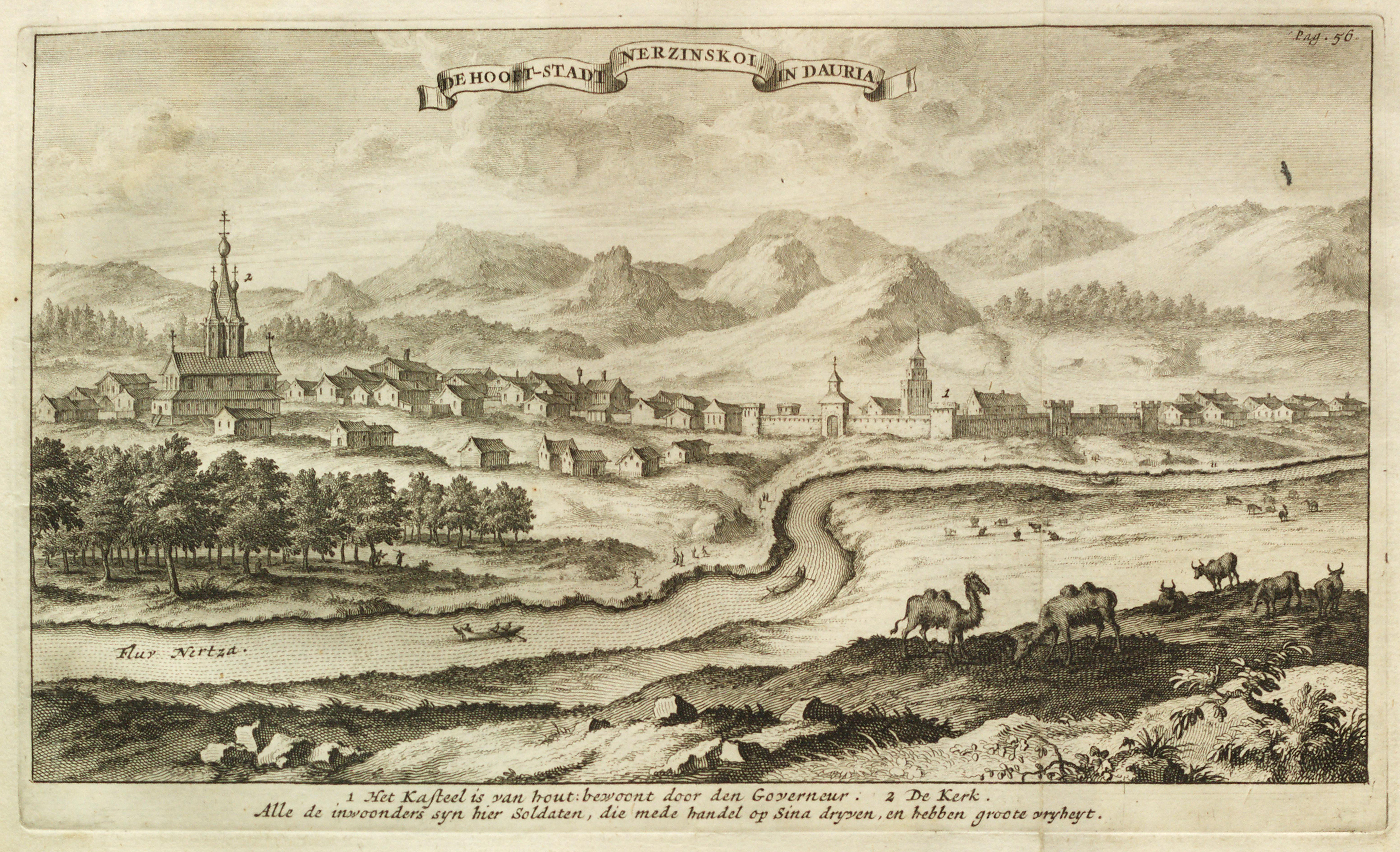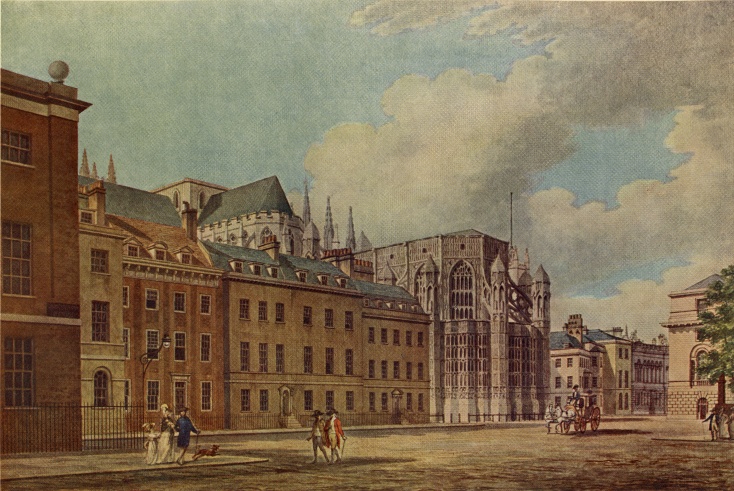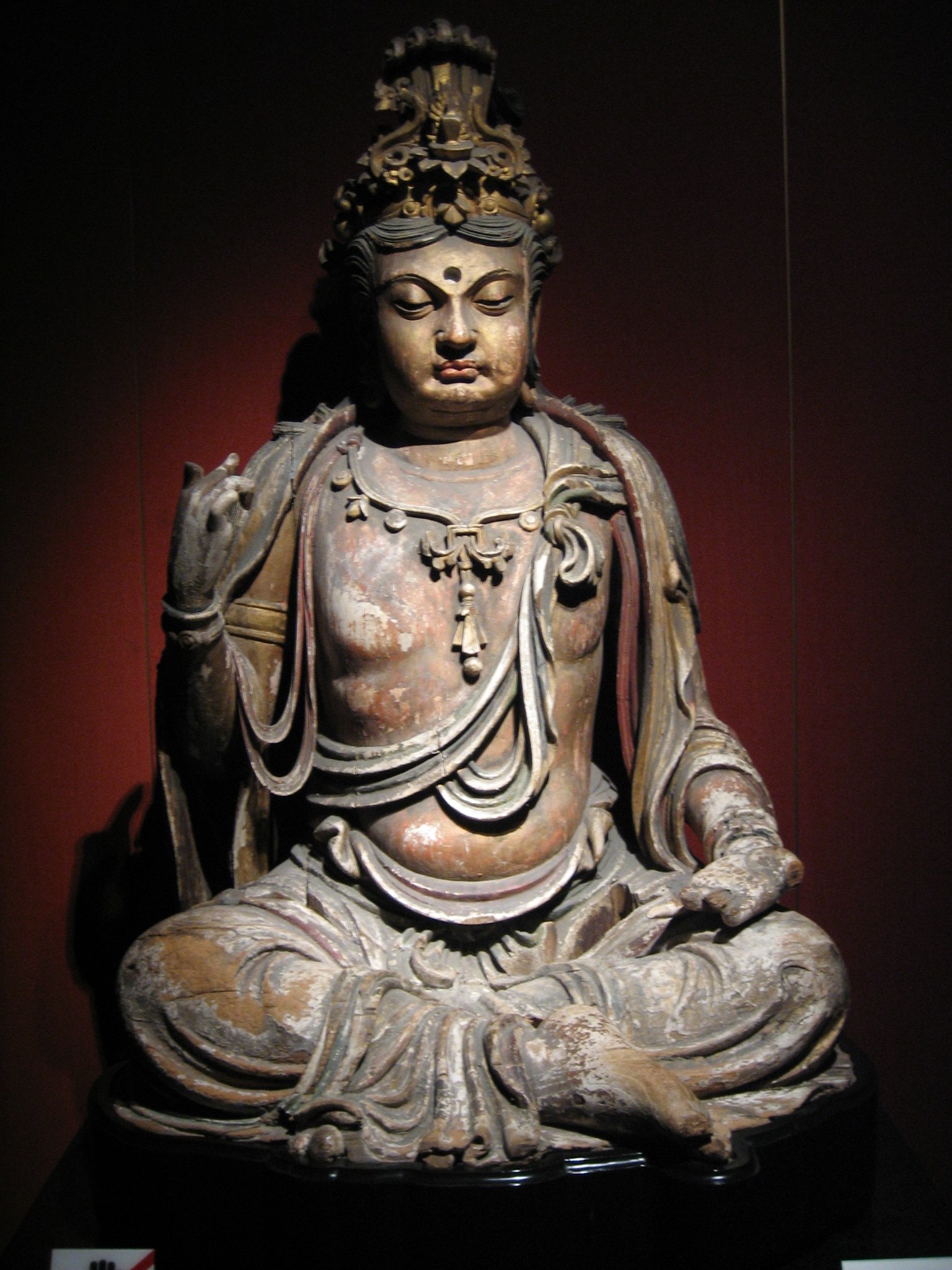|
Jean-François Gerbillon
Jean-François Gerbillon (4 June 1654, Verdun, France – 27 March 1707, Peking, China) was a French missionary who worked in China. He entered the Society of Jesus, 5 Oct, 1670, and after completing the usual course of study taught grammar and humanities for seven years. His long-cherished desire to labor in the missions of the East was gratified in 1685, when he joined the group of Jesuits who had been chosen to found the French mission in China. For the first leg of the trip, he was attached to the embassy of the Chevalier de Chaumont to Siam, and was accompanied by a group of Jesuit mathematicians (Jean de Fontaney (1643–1710), Joachim Bouvet (1656–1730), Louis Le Comte (1655–1728), Guy Tachard (1648–1712) and Claude de Visdelou (1656–1737)). Tachard would remain in Siam besides King Narai, but the others would reach China in 1687. Upon their arrival in Beijing they were received by the Kangxi Emperor who was favorably impressed by them and retained Gerbillion ... [...More Info...] [...Related Items...] OR: [Wikipedia] [Google] [Baidu] |
Verdun-sur-Meuse
Verdun (, , , ; official name before 1970 ''Verdun-sur-Meuse'') is a large city in the Meuse department in Grand Est, northeastern France. It is an arrondissement of the department. Verdun is the biggest city in Meuse, although the capital of the department is Bar-le-Duc, which is slightly smaller than Verdun. It is well known for giving its name to a major battle of the First World War. Geography Verdun is situated on both banks of the river Meuse, in the northern part of the Meuse department. It is connected by rail to Jarny. The A4 autoroute Paris–Metz–Strasbourg passes south of the town. History Verdun (''Verodunum'', a latinisation of a place name meaning "strong fort" in Gaulish) was founded by the Gauls. It has been the seat of the bishop of Verdun since the 4th century, with interruptions.A History of Food, Maguelonne Toussaint-Samat, Blackwell Publishing 1992, p.567 In 486, following the decisive Frankish victory at the Battle of Soissons, the city (amon ... [...More Info...] [...Related Items...] OR: [Wikipedia] [Google] [Baidu] |
Nerchinsk
Nerchinsk ( rus, Не́рчинск; bua, Нэршүү, ''Nershüü''; mn, Нэрчүү, ''Nerchüü''; mnc, m=, v=Nibcu, a=Nibqu; zh, t=涅尔琴斯克(尼布楚), p=Niè'ěrqínsīkè (Níbùchǔ)) is a town and the administrative center of Nerchinsky District in Zabaykalsky Krai, Russia, located on the left bank of the Nercha River, above its confluence with the Shilka River, east of Lake Baikal, about west of the Chinese border, and east of Chita, the administrative center of the krai. Population: 6,713 (1897). Town name in other languages Two important treaties between the Russian Empire and Manchu China mention Nerchinsk: the 1689 Treaty of Nerchinsk and the 1727 Treaty of Kyakhta. Non-Russian comments on these treaties or on the history of the town may mention other names: *Latin: Nipchou or Nipcha (however, the Treaty of Kyakhta called the town Nipkoa) *Manchu: Nibcu hoton * Chinese: 尼布楚; Pinyin: Níbùchǔ History The fort of Nerchins ... [...More Info...] [...Related Items...] OR: [Wikipedia] [Google] [Baidu] |
Jesuit Missionaries In China
, image = Ihs-logo.svg , image_size = 175px , caption = ChristogramOfficial seal of the Jesuits , abbreviation = SJ , nickname = Jesuits , formation = , founders = , founding_location = , type = Order of clerics regular of pontifical right (for men) , headquarters = Generalate:Borgo S. Spirito 4, 00195 Roma-Prati, Italy , coords = , region_served = Worldwide , num_members = 14,839 members (includes 10,721 priests) as of 2020 , leader_title = Motto , leader_name = la, Ad Majorem Dei GloriamEnglish: ''For the Greater Glory of God'' , leader_title2 = Superior General , leader_name2 = Fr. Arturo Sosa, SJ , leader_title3 = Patron saints , leader_name3 = , leader_title4 = Ministry , leader_name4 = Missionary, educational, literary works , main_organ = La Civiltà Cattolica ... [...More Info...] [...Related Items...] OR: [Wikipedia] [Google] [Baidu] |
17th-century French Jesuits
The 17th century lasted from January 1, 1601 ( MDCI), to December 31, 1700 ( MDCC). It falls into the early modern period of Europe and in that continent (whose impact on the world was increasing) was characterized by the Baroque cultural movement, the latter part of the Spanish Golden Age, the Dutch Golden Age, the French '' Grand Siècle'' dominated by Louis XIV, the Scientific Revolution, the world's first public company and megacorporation known as the Dutch East India Company, and according to some historians, the General Crisis. From the mid-17th century, European politics were increasingly dominated by the Kingdom of France of Louis XIV, where royal power was solidified domestically in the civil war of the Fronde. The semi-feudal territorial French nobility was weakened and subjugated to the power of an absolute monarchy through the reinvention of the Palace of Versailles from a hunting lodge to a gilded prison, in which a greatly expanded royal court could be more easil ... [...More Info...] [...Related Items...] OR: [Wikipedia] [Google] [Baidu] |
French Roman Catholic Missionaries
French (french: français(e), link=no) may refer to: * Something of, from, or related to France ** French language, which originated in France, and its various dialects and accents ** French people, a nation and ethnic group identified with France ** French cuisine, cooking traditions and practices Fortnite French places Arts and media * The French (band), a British rock band * "French" (episode), a live-action episode of ''The Super Mario Bros. Super Show!'' * ''Française'' (film), 2008 * French Stewart (born 1964), American actor Other uses * French (surname), a surname (including a list of people with the name) * French (tunic), a particular type of military jacket or tunic used in the Russian Empire and Soviet Union * French's, an American brand of mustard condiment * French catheter scale, a unit of measurement of diameter * French Defence, a chess opening * French kiss, a type of kiss involving the tongue See also * France (other) * Franch, a surname * Fre ... [...More Info...] [...Related Items...] OR: [Wikipedia] [Google] [Baidu] |
People From Verdun
A person ( : people) is a being that has certain capacities or attributes such as reason, morality, consciousness or self-consciousness, and being a part of a culturally established form of social relations such as kinship, ownership of property, or legal responsibility. The defining features of personhood and, consequently, what makes a person count as a person, differ widely among cultures and contexts. In addition to the question of personhood, of what makes a being count as a person to begin with, there are further questions about personal identity and self: both about what makes any particular person that particular person instead of another, and about what makes a person at one time the same person as they were or will be at another time despite any intervening changes. The plural form "people" is often used to refer to an entire nation or ethnic group (as in "a people"), and this was the original meaning of the word; it subsequently acquired its use as a plural form of p ... [...More Info...] [...Related Items...] OR: [Wikipedia] [Google] [Baidu] |
1707 Deaths
Seventeen or 17 may refer to: *17 (number), the natural number following 16 and preceding 18 * one of the years 17 BC, AD 17, 1917, 2017 Literature Magazines * ''Seventeen'' (American magazine), an American magazine * ''Seventeen'' (Japanese magazine), a Japanese magazine Novels * ''Seventeen'' (Tarkington novel), a 1916 novel by Booth Tarkington *''Seventeen'' (''Sebuntiin''), a 1961 novel by Kenzaburō Ōe * ''Seventeen'' (Serafin novel), a 2004 novel by Shan Serafin Stage and screen Film * ''Seventeen'' (1916 film), an American silent comedy film *''Number Seventeen'', a 1932 film directed by Alfred Hitchcock * ''Seventeen'' (1940 film), an American comedy film *'' Eric Soya's '17''' (Danish: ''Sytten''), a 1965 Danish comedy film * ''Seventeen'' (1985 film), a documentary film * ''17 Again'' (film), a 2009 film whose working title was ''17'' * ''Seventeen'' (2019 film), a Spanish drama film Television * ''Seventeen'' (TV drama), a 1994 UK dramatic short starring Chris ... [...More Info...] [...Related Items...] OR: [Wikipedia] [Google] [Baidu] |
1654 Births
Events January–March * January 6– In India, Jaswant Singh of Marwar (in what is now the state of Rajasthan) is elevated to the title of Maharaja by Emperor Shah Jahan. * January 11– In the Battle of Río Bueno in southern Chile during the Arauco War, the indigenous Huilliche warriors rout Spanish troops from Fort Nacimiento who are attempting to cross the Bueno River. * January 26– Portugal recaptures the South American city of Recife from the Netherlands after a siege of more than two years during the Dutch-Portuguese War, bringing an end to Dutch rule of what is now Brazil. The Dutch West India Company had held the city (which they called Mauritsstad) for more than 23 years. * February 9– Spanish troops led by Don Gabriel de Rojas y Figueroa successfully attack the Fort de Rocher, a pirate-controlled base on the Caribbean island of Tortuga. * February 10– The Battle of Tullich takes place in Aberdeenshire in Scotland ... [...More Info...] [...Related Items...] OR: [Wikipedia] [Google] [Baidu] |
Northeastern China
Northeast China or Northeastern China () is a geographical region of China, which is often referred to as "Manchuria" or "Inner Manchuria" by surrounding countries and the West. It usually corresponds specifically to the three provinces east of the Greater Khingan Range, namely Liaoning, Jilin, and Heilongjiang, but historically is meant to also encompass the four easternmost prefectures of Inner Mongolia west of the Greater Khingan. The heartland of the region is the Northeast China Plain, the largest plain in China, with an area over . It is separated from Russian Far East to the north by the Amur, Argun, and Ussuri rivers; from Korea to the south by the Yalu and Tumen Rivers; and from Inner Mongolia to the west by the Greater Khingan and parts of the Xiliao River. Due to the shrinking of its once-powerful industrial sector and decline of its economic growth and population, the region is often referred to as China's Rust Belt. As a result, a campaign named Northeas ... [...More Info...] [...Related Items...] OR: [Wikipedia] [Google] [Baidu] |
Khalkha
The Khalkha ( Mongolian: mn, Халх, Halh, , zh, 喀爾喀) have been the largest subgroup of Mongol people in modern Mongolia since the 15th century. The Khalkha, together with Chahars, Ordos and Tumed, were directly ruled by Borjigin khans until the 20th century; unlike the Oirats, who were ruled by Dzungar nobles or the Khorchins, who were ruled by Qasar's descendants. The two original major Khalkha groups were ruled by the direct male line descendants of Dayan Khan. The Baarin, Khongirad, Jaruud, Bayaud and the O'zeed (Ujeed) became Dayan Khan's fifth son Achibolod's subjects, thus formed the Southern Five Halhs. Seven northern Khalkha otogs: 1) Jalairs, Olkhonud; 2) Besut, Iljigin; 3) Gorlos, Keregut; 4) Khuree, Khoroo, Tsookhor; 5) Khukhuid, Khatagin; 6) Tanghut, Sartuul; 7) Uriankhai became Dayan Khan's youngest (could be third) son Geresenje's ( mn, Гэрсэне Жалайр Хан) subjects. Khotogoids are close in culture and language to the Khalkha Mongols. T ... [...More Info...] [...Related Items...] OR: [Wikipedia] [Google] [Baidu] |
Oirats
Oirats ( mn, Ойрад, ''Oirad'', or , Oird; xal-RU, Өөрд; zh, 瓦剌; in the past, also Eleuths) are the westernmost group of the Mongols whose ancestral home is in the Altai Mountains, Altai region of Siberia, Xinjiang and western Mongolia. Historically, the Oirats were composed of four major tribes: Dzungar people, Dzungar (Choros or Olot people, Olots), Torghut, Dörbet Oirat, Dörbet and Khoshut. The minor tribes include: Khoid, Bayads, Myangad, Zakhchin, Baatud. The modern Kalmyks of Kalmykia on the Caspian Sea in southeastern Europe are Oirats. Etymology The name derives from Mongolic languages, Mongolic ''oi'' ("forest, woods") and ''ard'' < *''harad'' ("people"),M.Sanjdorj, History of the Mongolian People's Republic, Volume I, 1966 and they were counted among the "" in the 13th century. Similar to that is the Turkic languages, Turkic ''aghach ari'' ("woodman") that is found as a place name in many locales, ... [...More Info...] [...Related Items...] OR: [Wikipedia] [Google] [Baidu] |
Mongolia
Mongolia; Mongolian script: , , ; lit. "Mongol Nation" or "State of Mongolia" () is a landlocked country in East Asia, bordered by Russia to the north and China to the south. It covers an area of , with a population of just 3.3 million, making it the world's most sparsely populated sovereign nation. Mongolia is the world's largest landlocked country that does not border a closed sea, and much of its area is covered by grassy steppe, with mountains to the north and west and the Gobi Desert to the south. Ulaanbaatar, the capital and largest city, is home to roughly half of the country's population. The territory of modern-day Mongolia has been ruled by various nomadic empires, including the Xiongnu, the Xianbei, the Rouran, the First Turkic Khaganate, and others. In 1206, Genghis Khan founded the Mongol Empire, which became the largest contiguous land empire in history. His grandson Kublai Khan conquered China proper and established the Yuan dynasty. After the c ... [...More Info...] [...Related Items...] OR: [Wikipedia] [Google] [Baidu] |





_1938.jpg)



